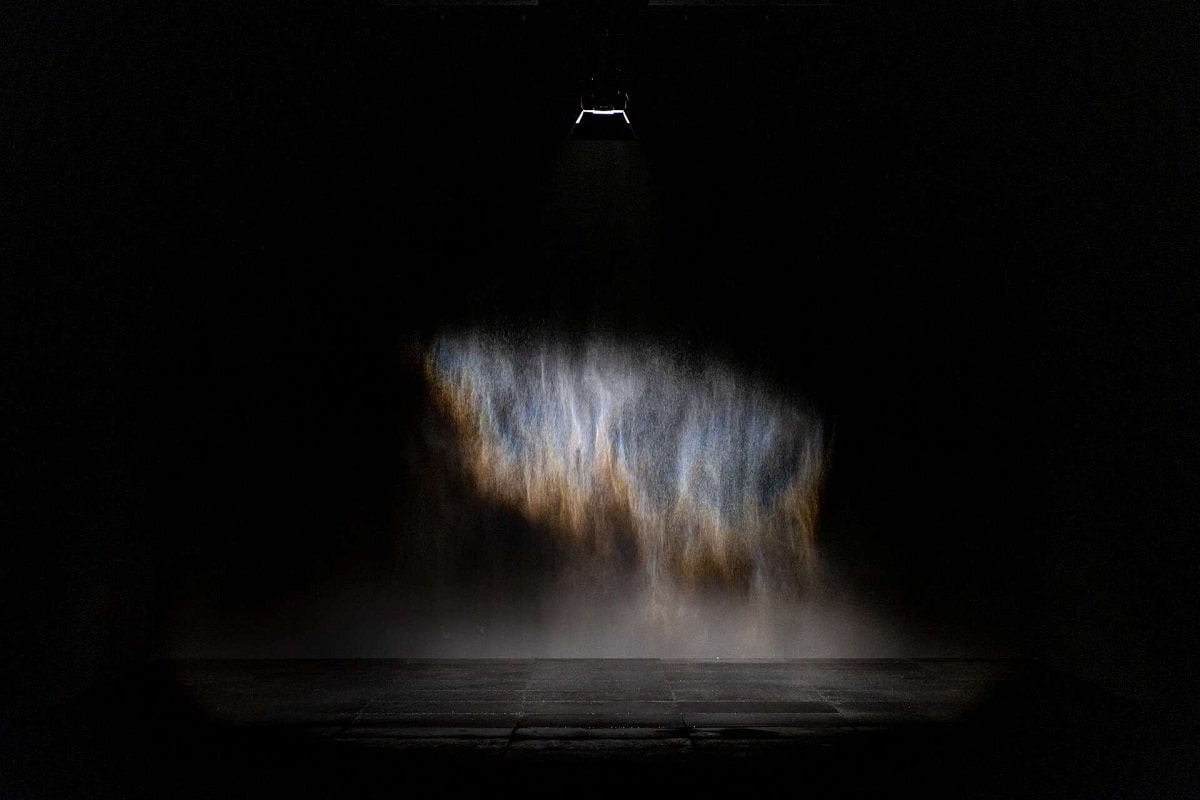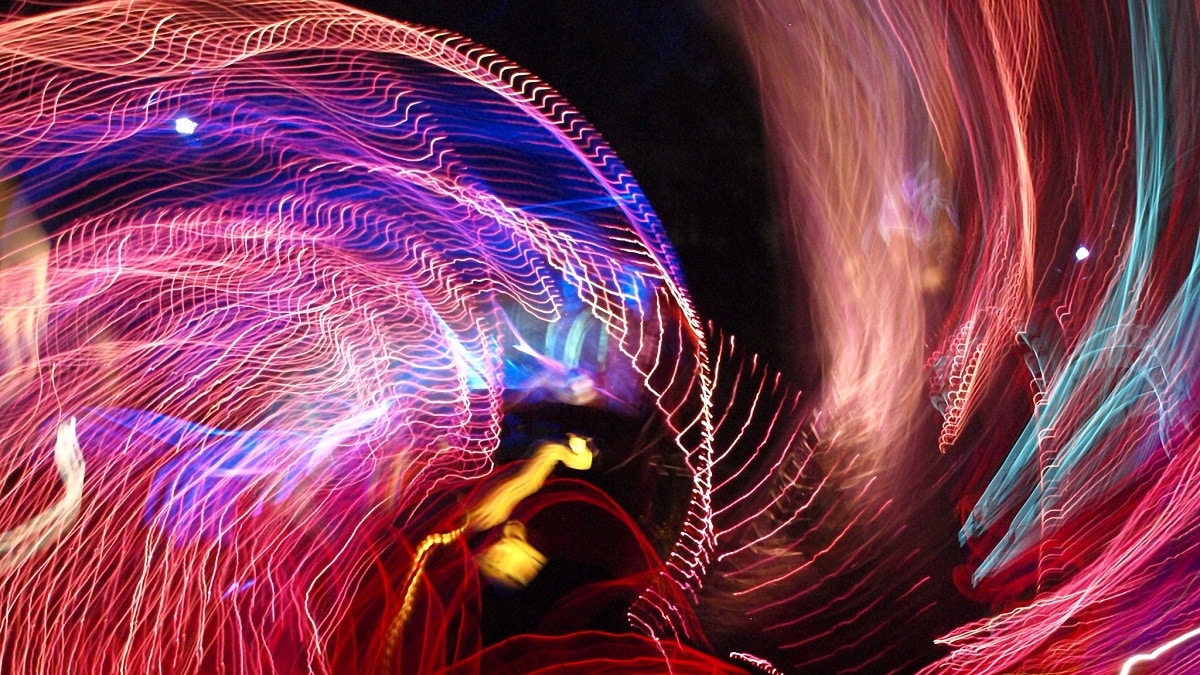
What does a blind man see? The question itself is paradoxical since a blind man cannot see. However, it is a good question because there are different types of blindness and each of them has a different experience of "seeing" associated with it.
The partially blind see something, hence the question, and the totally blind, what do they see? Happily we respond without hesitation by saying that “black or dark”. However this is a mistake, since it is a response based on the visual experience that involves seeing colors, including black. So the answer is not so simple. Surprised? stay with us to really know what a blind man sees.
What is blindness?

This is the main starting point before delving into answering such a complex question of what does a blind man see? First it will be necessary to clarify what is meant by blindness.
In medicine there is no agreed definition for this concept, so as Dr. Rubén Pascual, an ophthalmologist, tells us, there is no clear and unequivocal definition for blindness. At the legal level, we find the same problem, and each country establishes a different legal definition for blindness. Yes, a general idea is accepted to refer to blindness and that is, according to Dr. Rubén Pascual: "Someone is considered to be 'blind' when they suffer a severe or total loss of vision that cannot be corrected with conventional or contact lenses."
According to this pathology, we can find different types of blindness: total blindness, partial blindness, from birth and after birth. Each of them is associated with a different "visual experience", so beyond black or total darkness, the visual experience of the blind is surprisingly broad: from absolute nothing to flashes of light, colored backgrounds and shapes as if it were a surreal dream.
What does a blind man see? A most varied sensory experience

We said at the beginning that this is a more complete question than it seems and difficult to answer. We commonly affirm that a blind person “sees nothing”, “sees black”, or “sees everything dark”. But what is "nothing"? "nothing" is simply "nothing", a difficult concept to assimilate due to its abstraction and lack of experience by sighted people of that nothingness that only the totally blind experience. If the reader realizes, we answer this question from our visual experience, that which sees black or dark when closing our eyes, forgetting that a blind person has no experience of vision and therefore has no experience of black or dark because simply he does not see colors, since he does not see. It seems very obvious but as we are observing in this analysis, it is not so.
Due to the different types of blindness that exist, the definition of blindness is complicated and becomes very broad, being the visual perceptions of the blind of the most varied at the same time they depend on multiple factors such as the magnitude of the blindness (total or partial), the cause that causes it and whether the blindness appeared before or after birth.
Therefore we will describe what does a blind man see depending on your particular type of blindness.
Visual experience according to the type of blindness
The plurality of visual experiences that blind people can experience is as peculiar as it is striking. We see it below.
partial blindness
Partial blindness is a visual disability of a significant degree in which the person still retains some ability to seebut with many limitations. Only will distinguish lights, shadows, maybe shapes and the movement of objects. The scope in vision will depend on the particular pathology. The totally blind, on the other hand, cannot perceive anything at all, not even light.
Since only the partially blind retain some ability to see, we will find in these cases a whole plurality of visual experiences depending on the underlying pathology. We detail it below:
- Blurred vision: the perceived images of the world are out of focus, without a clear definition of the limits that shape the objects, everything is perceived as a haze. It is usually caused by dysfunctions in the lenticular system of the eye (such as the cornea or the lens): these are the cases of cataracts, corneal dystrophy, etc.

- Scotoma: in these cases vision is diminished or canceled in a specific area of the field of vision (blind spot), while the rest of the visual field remains intact. The blind spot can be located in the peripheral region or in the central area. There are many pathologies that can cause this ailment, among which are: glaucoma, diabetic retinopathy, pigmentary retinopathy, brain injury, optic nerve injury, obstruction of the central artery that supplies the retina, etc.

- light and dark: in the most severe cases of partial blindness, shapes and colors are not distinguished, only some light and darkness, so that people can at least distinguish between day and night.

Blindness from birth vs blindness after birth
The visual experience that blind people can have is significantly different depending on whether they were born blind or acquired it later due to some pathology or accident. We will address each case in the following lines.
blindness after birth

Blindness after birth can be caused by pathologies such as diabetes, glaucoma, etc. or by an unfortunate accident that left the person blind. The causes are as different as the resulting ability to see, so the visual experience presented by the person is presented in the most varied ways. In the most severe cases, in which the person is completely unable to see, there is an important particularity: and it is that his brain "does see" and not only sees, but also retains the memory that he saw.
Perhaps the organ that receives stimuli -which is the eye and its annexes in this case- has been invalidated but the visual cortex has not and neither has the hippocampus (which stores the memory of the visual experience), so the visual cortex continues to emit images that the person "sees" even though they do not really exist. And in addition, these images can be associated with a memory that evokes a feeling. Let's say that the person preserves her “visual world” even though she can no longer see it.
The active visual cortex causes the person to detect flashes of light or even colored backgrounds. In other cases, on the other hand, the black constantly or a complete darkness.
You can also experience the so-called phenomenon of phosphenes, which are small flashes of light that occur spontaneously or after rubbing your eyes vigorously.
And finally, in the rarest cases we find visual hallucinations in which images and colors may appear. This condition is called charles bonnet syndrome.
To better understand the visual experience that a person who goes blind experiences, nothing beats a direct testimony and that is the case of Damon Rose: a BBC journalist who lost his vision as a child and writes in a middle article for which his peculiar visual experience works:
“Right now I have a dark brown background, with a turquoise luminescence front and center. Actually, it's just changed to green… now it's bright blue with flecks of yellow, and there's some orange threatening to come forward and cover everything. The rest of my field of vision is taken up with squashed geometric shapes, scribbles, and clouds that I couldn't hope to describe, and not before they change back again. In an hour, everything will be different. I know this is going to sound strange coming from a blind person, but when people ask me what I miss the most about not being able to see, my answer is always: the darkness."
Damon Rose, BBC journalist.
blindness from birth

This is perhaps the most difficult case to understand, although at first it seems the easiest and most obvious. We tend to think that these people see everything permanently black or dark, but that is a response that we give unconsciously from our visual experience.
Those of us who do see are able to appreciate black and other colors because we see light. But a person blind from birth, who has never seen light or experienced color, neither sees black nor sees darkness. He simply sees "nothing" and nothing is "nothing." This is the complexity of the case, what is nothing? It is difficult for us to assimilate because in our visual world there are always things, colors, visual experiences and we do not know what that void or nothing is.
People who have never seen anything therefore, They neither see a black background nor phosphenes nor can they experience visual hallucinations.. Let's think that your brain has a "blind programming" that has nothing to do with the programming of sighted people who generate and store visual experiences.
Tommy Edison, a youtuber who was born blind, speaks very well of this “nothing”:
"Throughout my life people have asked me. They always want to know: “What do you see? You have to see something, you have to see something!» No, I don't see anything. People who see often say: «. Well no, you have to see to know what black is, right? So I can't see the black. It's just nothing. I don't have a color for it."
Tommy Edison, YouTuber.